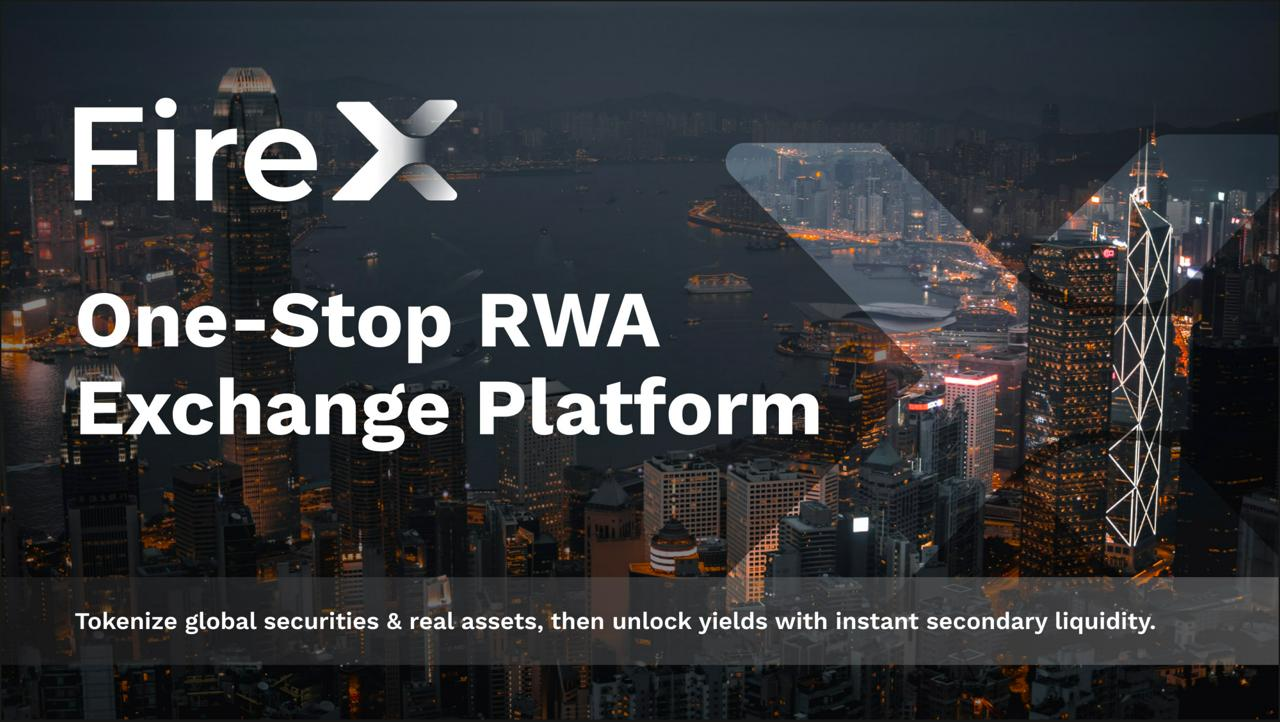
The financial world is standing at the edge of a quiet revolution.
Real World Assets (RWA) — the tokenization of tangible assets like bonds, real estate, and commodities — are rapidly transforming how value is created, verified, and exchanged.
For FireX, RWA is not just another DeFi narrative.
It’s a systemic redesign of how global finance works — one that replaces institutional trust with verifiable transparency, and static ledgers with dynamic, programmable markets.
For centuries, traditional finance has been built upon paper, intermediaries, and jurisdictional boundaries.
Each step — issuance, custody, settlement, auditing — relies on a chain of trust between entities, often siloed and opaque.
This structure creates several long-standing inefficiencies:
Multi-layer custodianship and reconciliation delays
Cross-border transaction friction and regulatory fragmentation
High operational costs and limited transparency
In essence, traditional finance is a trust pyramid — reliant on institutions, not code.
The result: vast pools of assets remain illiquid and inaccessible, trapped in closed systems that struggle to communicate with each other.
2. From Trust to Verification: The RWA Revolution
RWA marks a shift from “trusted intermediaries” to “verifiable systems.”
By encoding real-world assets into smart contracts, RWA networks allow financial transactions to operate under a new logic:
Proof of Authenticity – Each asset’s origin, ownership, and cash flow can be cryptographically verified on-chain.
Atomic Settlement – Transactions finalize instantly without third-party clearing.
Global Liquidity – Assets become discoverable and tradable across jurisdictions, 24/7.
What used to take days or weeks — transferring a bond, pledging collateral, or verifying title — can now occur in minutes.
Finance moves from being slow and paper-based to instant and composable.
3. FireX’s Vision: Building the Infrastructure for On-Chain Finance
At FireX, we view RWA as the foundation of a new financial internet — one that bridges traditional capital with decentralized infrastructure.
We’re focused on building three core pillars to make this transformation scalable and credible:
On-Chain Credit Layer
FireX is developing standardized credit models that map traditional risk metrics — credit ratings, default probabilities, and cash flow patterns — into verifiable on-chain data structures.
Compliance Bridge
FireX collaborates with licensed custodians and legal partners across jurisdictions, ensuring that every tokenized asset maintains legal enforceability both on paper and on-chain.
Open Liquidity Market
We’re creating decentralized secondary markets where tokenized assets can be traded, collateralized, or composited into new financial products — all within a unified liquidity layer.
Our mission is to merge the stability of traditional finance with the efficiency and openness of blockchain.
4. When TradFi Meets DeFi: Boundaries Begin to Fade
The future of finance isn’t a clash between TradFi and DeFi — it’s a fusion.
We’re already seeing early signals:
Institutional Adoption – Banks, funds, and asset managers are exploring blockchain-based debt, fund shares, and yield products.
Regulatory Innovation – Governments are piloting “on-chain compliance” and programmable auditing frameworks.
AI + DeFi Convergence – Machine learning models are beginning to power risk pricing, yield optimization, and real-time portfolio management for RWAs.
In this new landscape, traditional finance evolves from a closed ledger to an open protocol — one that speaks the language of code, transparency, and interoperability.
5. From Paper to Chain: A Civilizational Leap
Bringing real-world assets on-chain is more than a technological upgrade — it’s a civilizational leap.
It redefines how trust, value, and ownership are expressed in a digital economy.
At FireX, we’re not merely putting assets on blockchain; we’re rebuilding the foundation of global finance — one where capital moves freely, verifiably, and inclusively.
The goal is not to “put traditional finance on-chain.”
It’s to enable a world where assets are born natively digital, and markets operate as open networks rather than gated systems.
Disclaimer: This article is reproduced from other media. The purpose of reprinting is to convey more information. It does not mean that this website agrees with its views and is responsible for its authenticity, and does not bear any legal responsibility. All resources on this site are collected on the Internet. The purpose of sharing is for everyone's learning and reference only. If there is copyright or intellectual property infringement, please leave us a message.
©Copyright 2009-2020 Startup Weekly Contact Us SiteMap